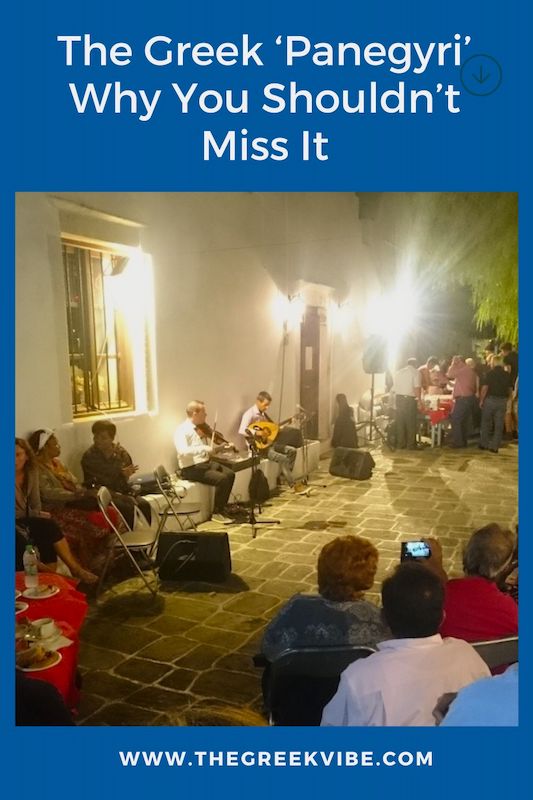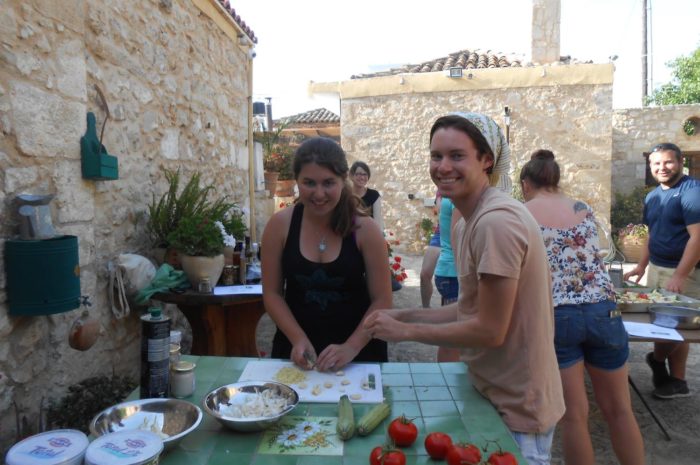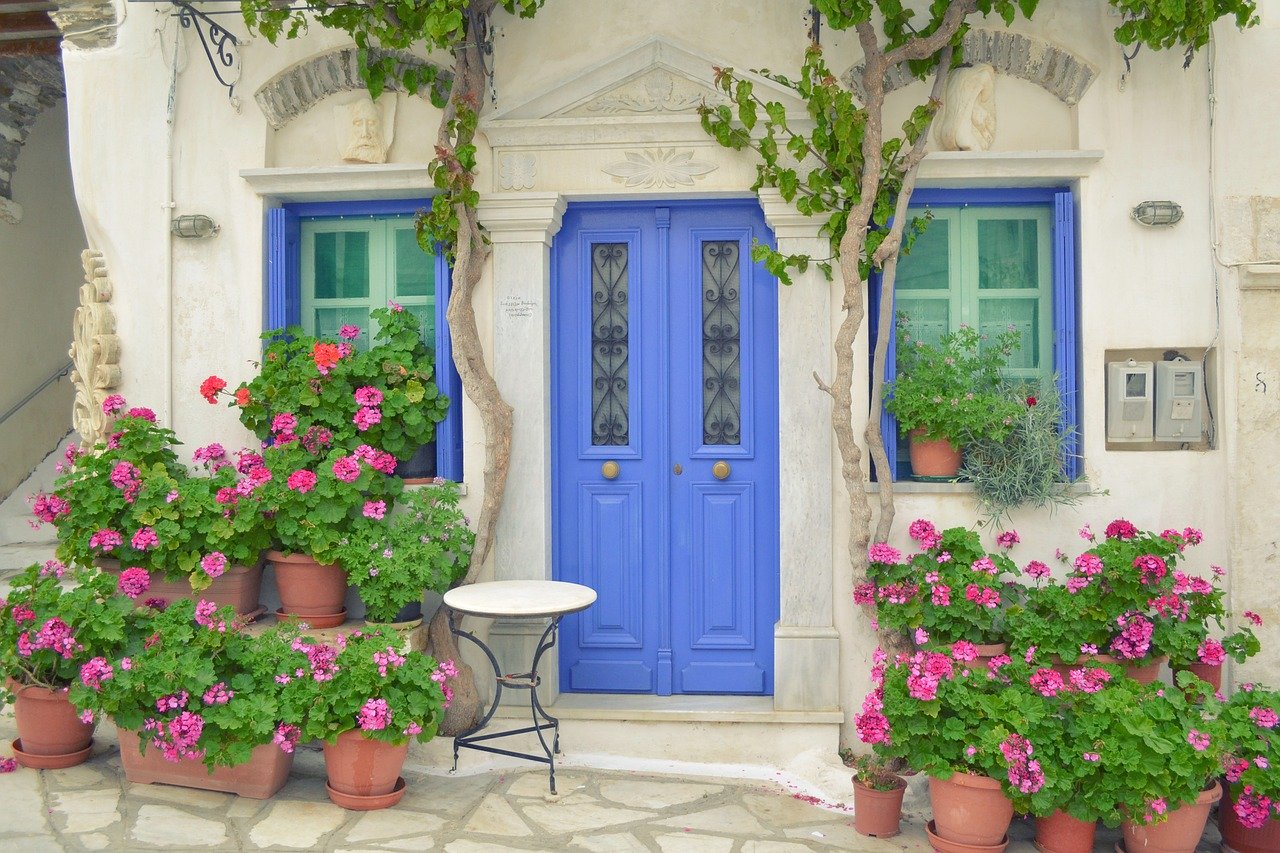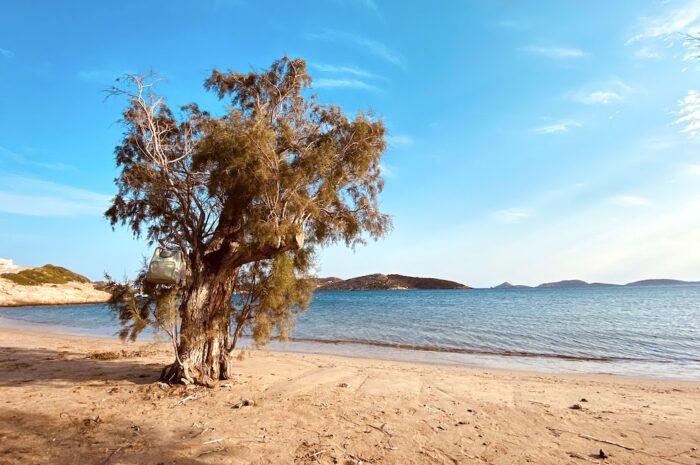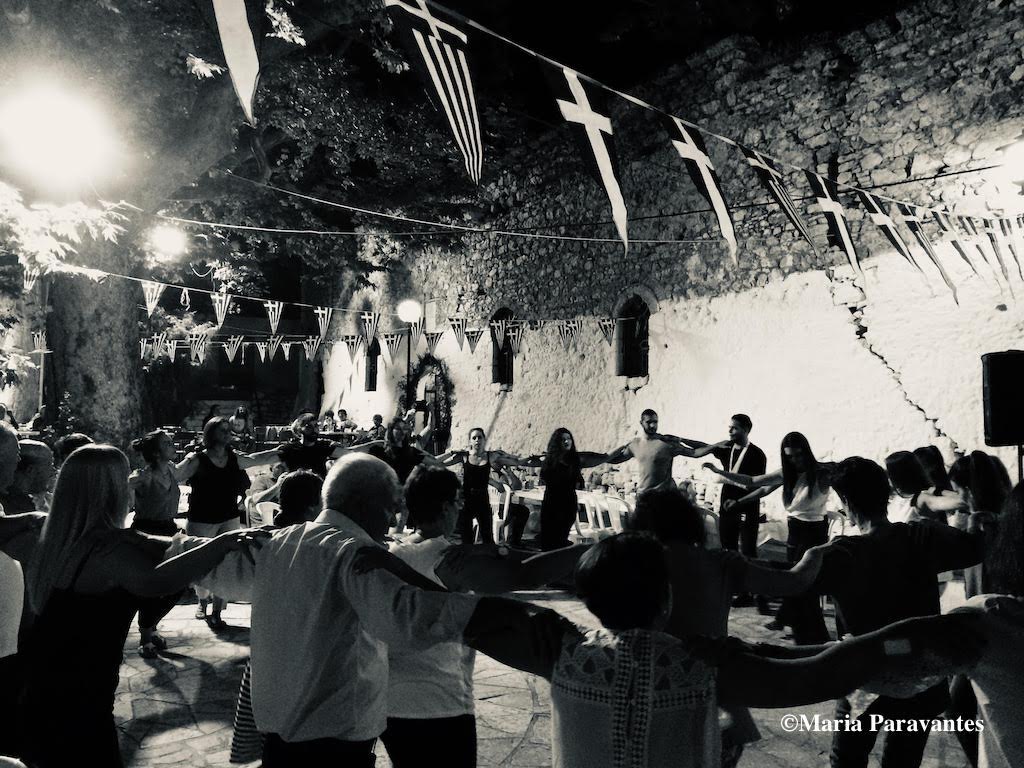
If there’s one thing you should absolutely NOT miss when visiting Greece, then that is the town “panegyri” – a special festival that is best enjoyed outdoors in the summer. Each village, island, region, and town in Greece has its own and locals are always especially proud of their own panegyri happening.
What is a ‘Panegyri’
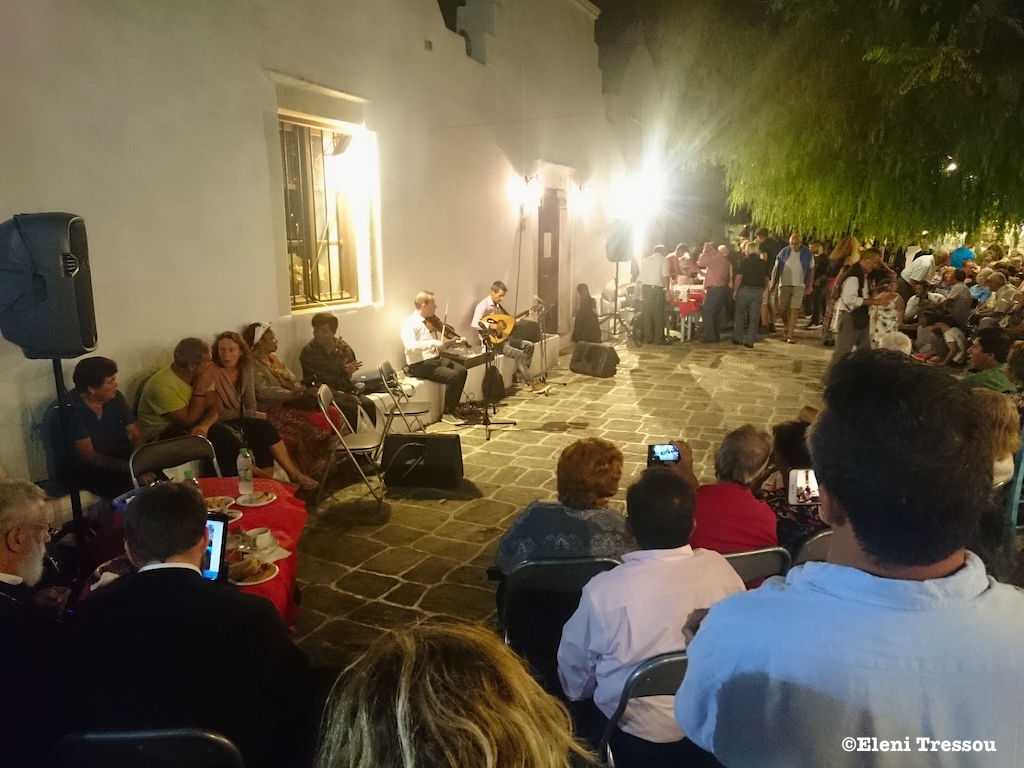
The word panegyri comes from the Ancient Greek word “panegyris” (πανήγυρις) consisting of “pan” which means “everything” and “gyris” from the verb “ageiro” which means “to gather”. It’s not by chance that “gyros” in Greek means “to circle” and not doubt about it, dancing in circles is a very important part of the Greek panegyri.
The panegyri is a grand celebration of sorts which dates back to Ancient Greece, when it was known as “Mysterio” and held in honor of this or that god (or goddess) in hopes of getting on their better side.
Today, this practice is dedicated to a Greek saint, and usually held on his or her name day. The more important the saint, the greater the panegyri, that’s why the largest and finest are held across the country in honor of the Virgin Mary – the Panagia on August 15.
But there’s more! Each village, town and island has its own patron saint and so for them, in addition to the Panagia, the largest panegyri is held in honor of their own guardian.
The basic idea is to lure the gods – now saints – into favors with an assortment of goodies while at the same time have a good time with the help of fine wine, good food, friendly company and all this in the nurturing embrace of nature.
To put it shortly, Greeks always have a reason to celebrate, and I suggest you celebrate with them.
In addition to the traditional panegyria devoted to the saints, as of late a new variety has been created dedicated to everything from a local vegetable to a music genre and so we have panegyria named “giortes” (celebrations) in honor of the olive, the onion, the potato, the eggplant and so forth, even to cheese!
👉🏼 Find the best hotel deals for you
When and Where do Panegyria Take Place

The panegyri is held outdoors usually in the village square near the church, or if it’s a trade fair (“eboropanegyris”) in a large field.
Most of the panegyria take place in the summer and to be more precise in August. Although I usually advise readers against traveling to Greece in August at all costs, it is the main month during which you won’t have enough time to go to all the panegyria happening.
This wasn’t always the case, but since the majority of Greeks go on holidays in August – literally, Athens is empty. Just think… of Greece’s 10.6 million population, nearly half live in the Greek capital. That said, organizers decided it would be more to their benefit to hold the events in August.
► Traveling to Greece? Things you should know before your trip plus basic Greek words for each occasion
The Greek Panegyri in the Past
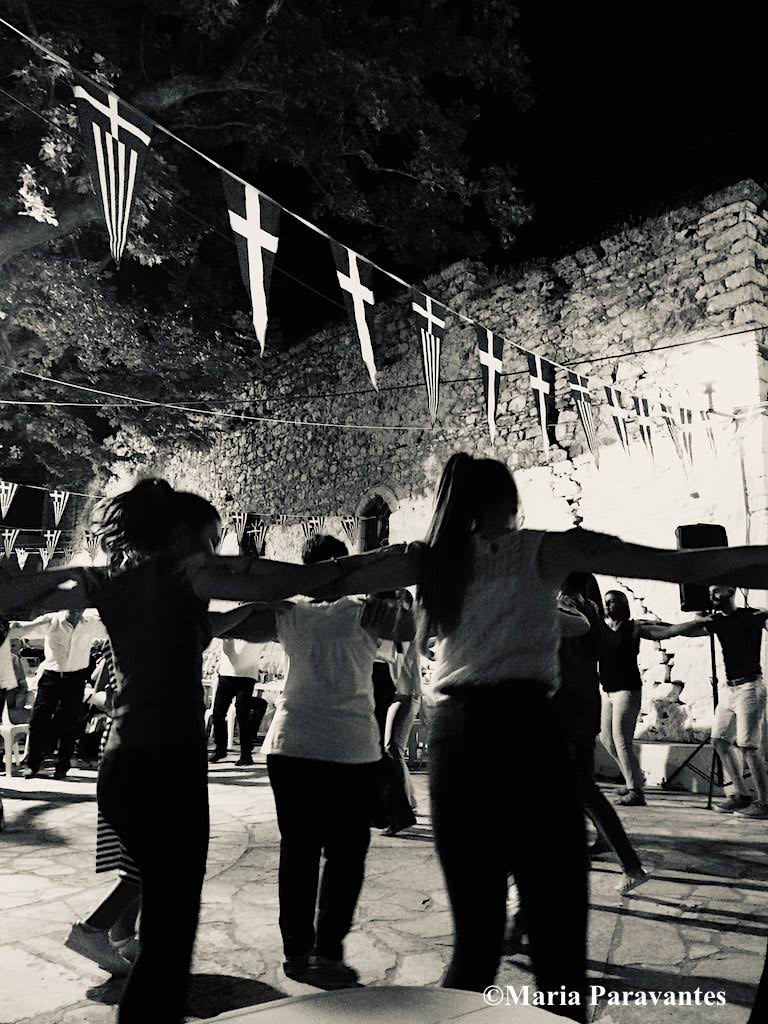
In the past, the panegyri served to bring people together and to strengthen bonds between families, locals and the church. This was necessary to ensure cohesion.
They also were the perfect occasion for commerce. These huge events were known as the “eboropanegyris” or outdoor trade events where merchants would display their goods and locals would have the chance to learn about the latest products, buy and socialize – all in one! These happenings too were held on occasion of a saint’s day and are still happening in Athens and elsewhere across Greece.
In Tegea, outside Tripoli, I remember my grandfather taking me to the “Panegyri tis Tegeas” – the largest such trade festival in the whole of Arcadia and the Peloponnese.
This week-long panegyri festival – which still takes place mid-August every year on occasion of the Panagia (Dormition of the Virgin Mary) feast – was the most exciting experience for me and I had seen it all mind you. As a Greek American, I had been to Disney World and Disney Land several times and yet, this Greek feast stole my heart.
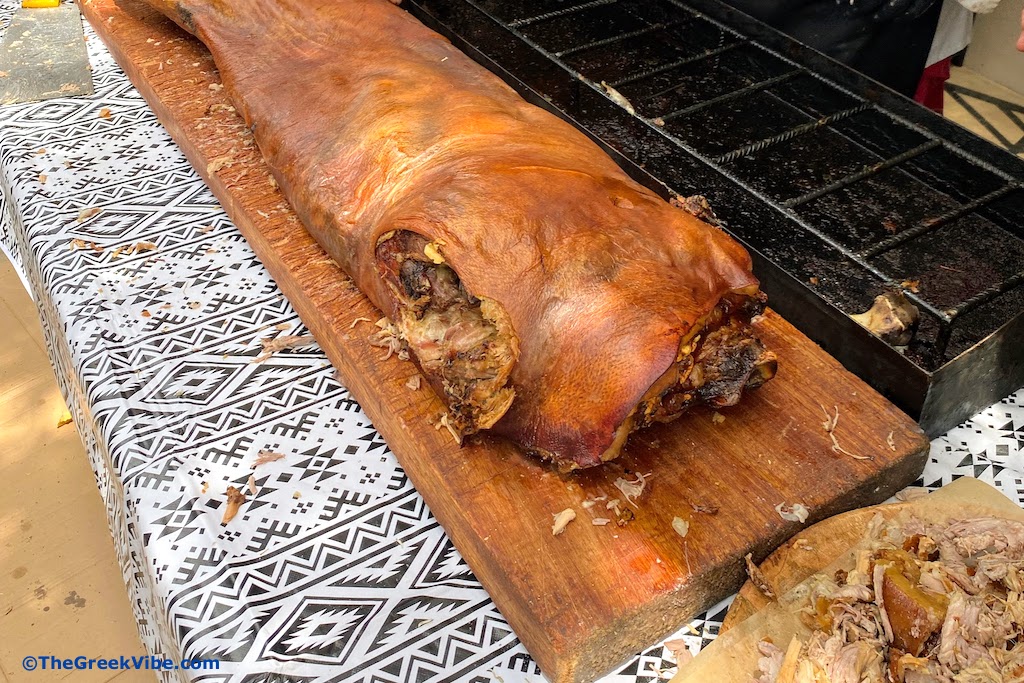
Why? Because the Greek panegyria of old were closer to the original Dionysian feasts. There was chaos, sweltering heat combined with bright lights, blaring klarino (clarinet) music (on the islands they play the laouto instead) and dust from the shuffling feet of hundreds of visitors as resourceful vendors loudly promoted their wares with the tempting smell of “gournopoula” in the air. And of course, the absolute highlight was the “Round of Death” (Gyros to Thanatou), which featured a daring motorcycle driver, an Evel Knievel of sorts, who rode his bike nearly vertical in a standing circular arena as we looked on enthralled.
The ballerina was the other ride I absolutely loved. We’d all jump into her skirt as she moved around in a frenzy. At the end of our summer outing, my grandfather would buy some “gournopoula” (crispy roasted pork) served traditionally on wax paper with salt and pepper accompanied by sliced tomato, locally made cheese (in the Peloponnese it was usually graviera) and homemade bread, a huge deep cinnamon red lollipop for me, and of course, loukoumades (Greek honey fritters), which we would take back home on the bus. The kiddie panegyri experience was never complete without cotton a cheap plastic toy from the fair.
► The Ultimate Travel Guide to Arcadia Greece
The Greek Panegyri Today
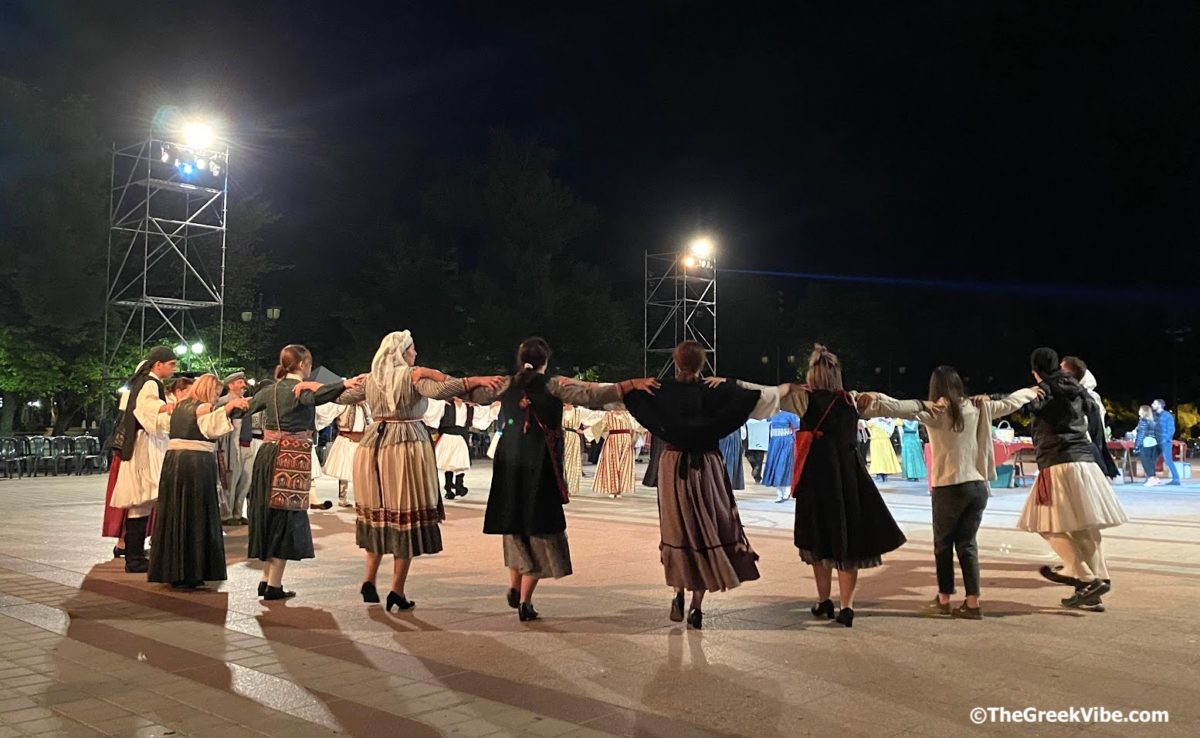
Much has changed since my day but much has (thankfully) stayed the same: long tables laid in paper, a makeshift wooden platform for the musicians takes center stage, massive grills (psistaries) are fired up, lights and… action. Once night falls, wafts of smoke-filled air summon the “faithful”.
This all starts with a mass in honor of the celebrating saint.
►Celebrating Agios Yakinthos – Greece’s Saint Valentine- On Crete
The main difference is that today you pay a token fee in most cases. In the way past, the panegyria, the food and wine were free to all. It would actually be an insult to charge visitors. This however was possible then because only the locals participated, the foods were prepared by the women of the town, and the wine offered by the taverna owner.
What’s more, the musicians would be paid on the spot by the locals. You’ve probably seen scenes of dancing Greeks placing bill after bill on the soloist’s forehead. Panegyria performances in the ’60s and ’70s were actually very lucrative for the musicians who would go from town to town in the summer much like the Karagiozis shadow puppet theater player.
In today’s world of travel and tourism, this would result in bankruptcy and so there is usually a charge, which is fair. But you can still find free panegyria in some far-off mountain villages or remote islands. Actually the Greeks abroad – Greek-Americans and Greek-Australians – first started charging as a way to collect funds that would support the local church and its activities.
👉🏼 Dream of visiting Greece? Start planning
The Greek Panegyri Festivals Abroad
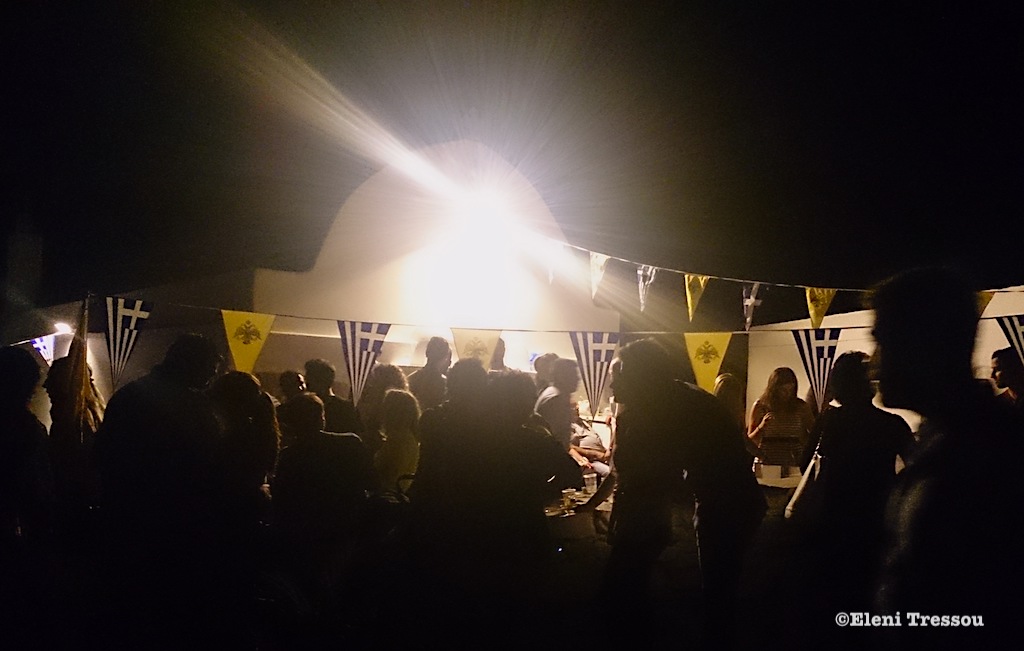
Which brings me to the panegyria abroad. You can take the Greek out of Greece, but you can’t take Greece out of the Greek.
Whether here in Greece or in some other distant part of the planet, Greeks far and wide still hold panegyria in summer to socialise, sing, dance, and of course, indulge in panegyri fare.
And so the Greek panegyri came to Chicago, Montreal, Toronto, Sydney, Melbourne and any spot in the world Greeks called their home.
These events, which are extremely popular with all generations of Greeks abroad, although most of us always complained, are the perfect chance to flirt, show off your Greek cooking skills, show off your Greek dancing skills, network for your Greek business, show off your clothes, eat, drink and be merry and all this while supporting the Greek Orthodox church of your neighborhood. It’s a win-win!
►What is Clean Monday and How Do Greeks Celebrate Kathara Deftera
The Greek Panegyri: What to Know – Maria’s Tips
• No panegyri is complete without the time-honoured gournopoula se ladokolla – pork (must be crispy on the outside, tender inside) served on wax paper. That’s right, no plates, no forks or knives. Just salt and pepper and plastic cups brimming with wine (or nowadays ice-cold beer).
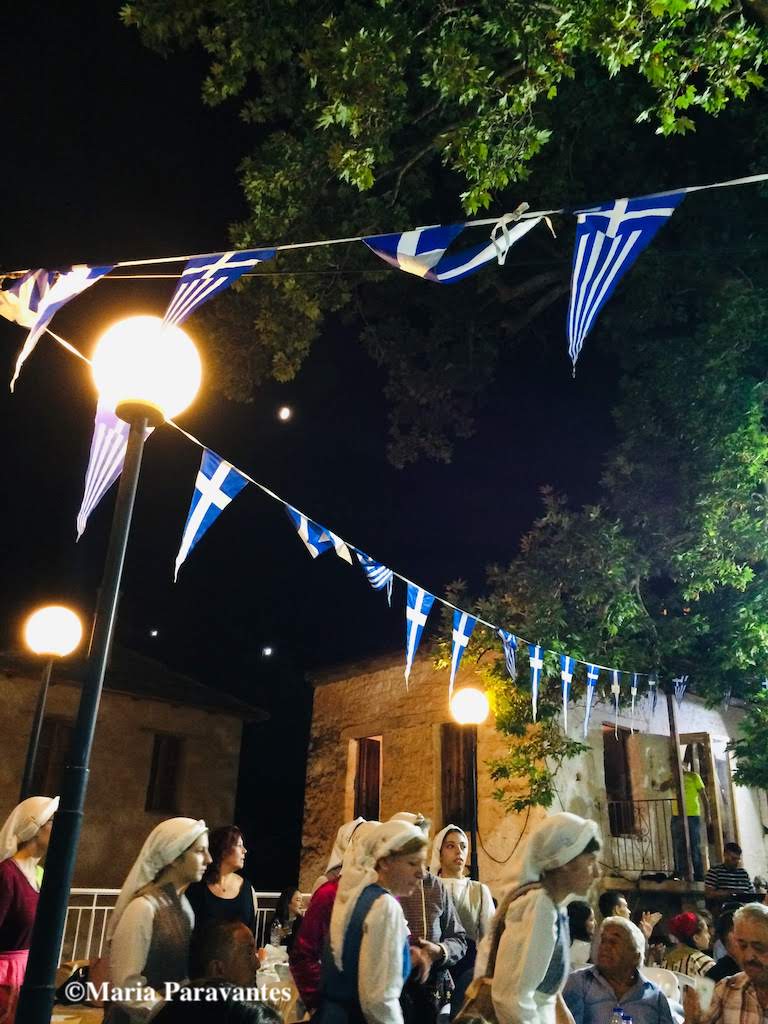
• Once stomachs are filled, the musicians take the stage and the dancing begins. In some villages, one whole song and dance may be dedicated to a single family!
• Yes, there is always something for the sweet tooth: the evening comes to a blissful close with a “box” of loukoumades – pastry puffs drizzled with honey, crushed almonds and cinnamon, today “enhanced” with chocolate
• The panegyri will start only after the church “esperinos” (evening service) and the blessing (litania) of the celebrating saint’s icon.
• So important is the panegyri that Greeks even have a dedicated site (and app) – e-panigiria – listing the festivals across the country.
►All You Wanted to Know About Greek Beers
Main Panegyria in Greece
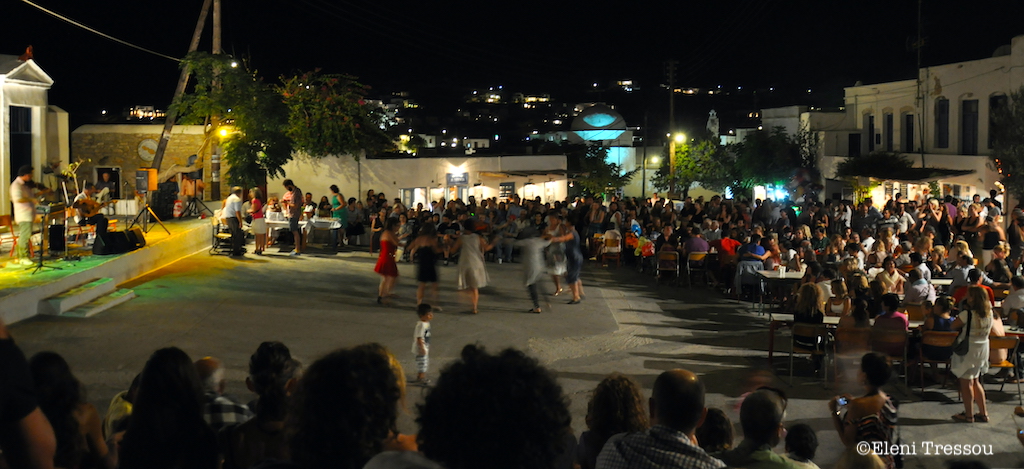
These are some of the largest panegyria happening around Greece. But rest assured, should you find yourself somewhere in Greece in August, you won’t miss the panegyri because everyone will be either taking about, getting ready for it or already dancing!
• Panegyri Profiti Ilia – Agiasos, Lesvos – July 18-20
• Panegyri tis Agias Markellas – Chios – July 22
• Panegyri Agias Annas – Ano Vervena (Kynouria) – July 24
• Panegyri tis Agias Paraskevis – Agia Paraskevi Athens, Amorgos, Grevena (Dotsiko) – July 26
• Panegyri Agios Pandeleimonas – Folegandros, Amyntaio (Northern Greece) – July 27
• Panegyri Lagadas – Ikaria – August 15
• “To Panegyri tis Tegeas” (near Tripoli) is the biggest trade fair in Arcadia and the Peloponnese – August 13-20
• Panegyri tis Panagias – all the Greek islands – August 15
• Panegyri tis Panagias Soumela – a grand celebration for the Pontic Greeks, Acharnes (near Athens), Katerini, Kastania, Vermio (Western Macedonia) – mid-August
• Crete – Usually the panegyria are held in school yards througout July and August and off season the panegyri tou Agiou Haralambous on February 10 in Sfakia.
• Panegyri Prastos Taxiarchon (Arcadia) – September 9 (in honor of the Archangels. Prastos is one of the Tsakonia villages where people still speak one of the oldest languages in the world. Read more about that here.
• Panegyri tou Stavrou – Donousa – September 14.
For me the panegyri is was and still is the embodiment of Greece. It is a celebration unlike any other where we modern-day Greeks come together, bring friends, let go, rejoice in life, imbibe and leave all worries aside.
Thankfully, you can still enjoy the panegyri experience in the Greek countryside or on one of the many islands. Just follow your nose and you’re bound to find where it’s all happening… the mouth-watering aroma of roasting pork works as a smoke signal of sorts.
👉🏼 Dream of visiting Greece? Start planning
♫ I end today’s post with a video from one of the more traditional panegyria, which takes place every September in the village of Prastos in Arcadia, Peloponnese. Enjoy!
Be well, travel!
Enjoyed this Post? Share and Pin it!
